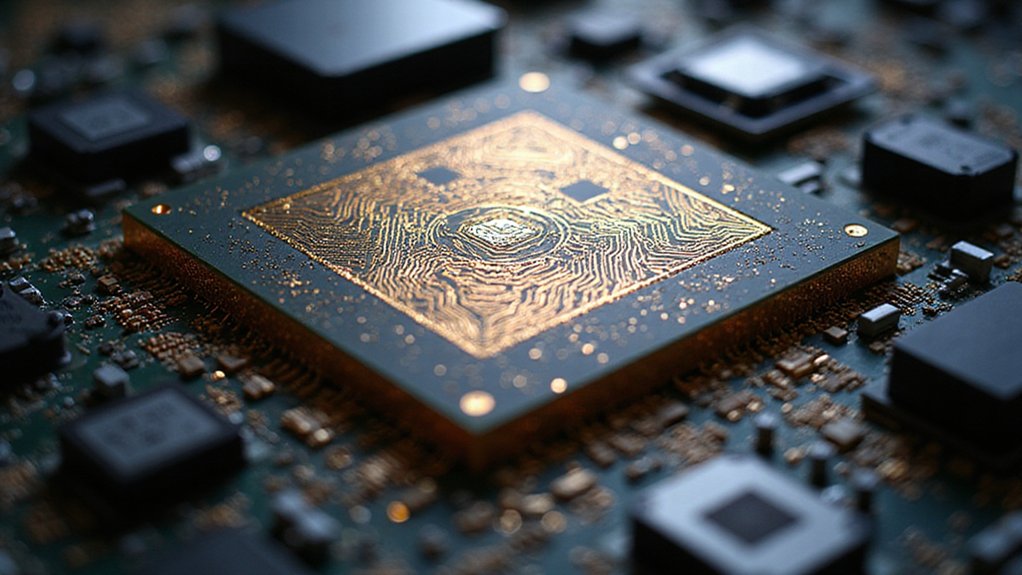Block’s audacious foray into Bitcoin mining hardware crystallizes on August 14, 2025, when the company releases its 3-nanometer semiconductor chips—a strategic gambit that positions Jack Dorsey‘s financial services firm squarely against the industrial mining oligarchy that has come to dominate Bitcoin’s computational backbone.
Block’s 3-nanometer mining chips represent a calculated assault on Bitcoin’s entrenched industrial mining establishment.
The timing feels deliberately provocative. CFO Amrita Ahuja’s CNBC confirmation arrives months after development completion, suggesting Block orchestrated this announcement for maximum market disruption. Their Proto Mining division engineered these chips with obsessive attention to performance-per-watt metrics, targeting the Achilles heel of contemporary mining operations: energy consumption that increasingly resembles small nations’ power grids.
What makes this particularly intriguing (beyond Dorsey’s predictably cryptic X teaser) is Block’s explicit democratization agenda. While mining conglomerates have systematically priced out smaller participants through economies of scale, Block apparently believes advanced semiconductor technology can reverse this consolidation trend. The 3-nanometer process represents genuine technical sophistication—not merely incremental improvement but potentially transformative hash rate optimization that could considerably alter miner economics.
Block’s positioning reveals broader strategic ambitions extending far beyond hardware sales. With over 8,600 BTC on their balance sheet and Cash App’s 8 million Bitcoin-engaged users, they’ve constructed a vertically integrated ecosystem spanning custody, payments, and now mining infrastructure. This isn’t merely product diversification; it’s architectural control over Bitcoin’s foundational layers. Market enthusiasm surrounding the impending launch has already driven Block’s stock price higher by 7.02%, signaling investor confidence in the company’s mining ambitions.
The competitive implications warrant scrutiny. Established mining hardware manufacturers now face a formidable adversary with substantial Bitcoin holdings, proven payment rails, and Dorsey’s almost messianic commitment to cryptocurrency adoption. Block’s entry signals potential market fragmentation where mining hardware becomes another battlefield for Bitcoin’s philosophical soul—centralized efficiency versus distributed resilience. The shift toward industrial-scale operations with specialized hardware has created significant barriers for individual miners seeking to participate in network validation.
Perhaps most notably, Block frames these chips as catalysts for Bitcoin’s transformation from digital gold to internet-native monetary protocol. Their merchant payment integration suggests mining hardware represents just one component of extensive Bitcoin commercialization strategy.
Whether smaller miners can actually compete using Block’s technology remains theoretical, but the company’s willingness to challenge mining centralization deserves grudging respect—even if their success depends on economics rather than ideology.







